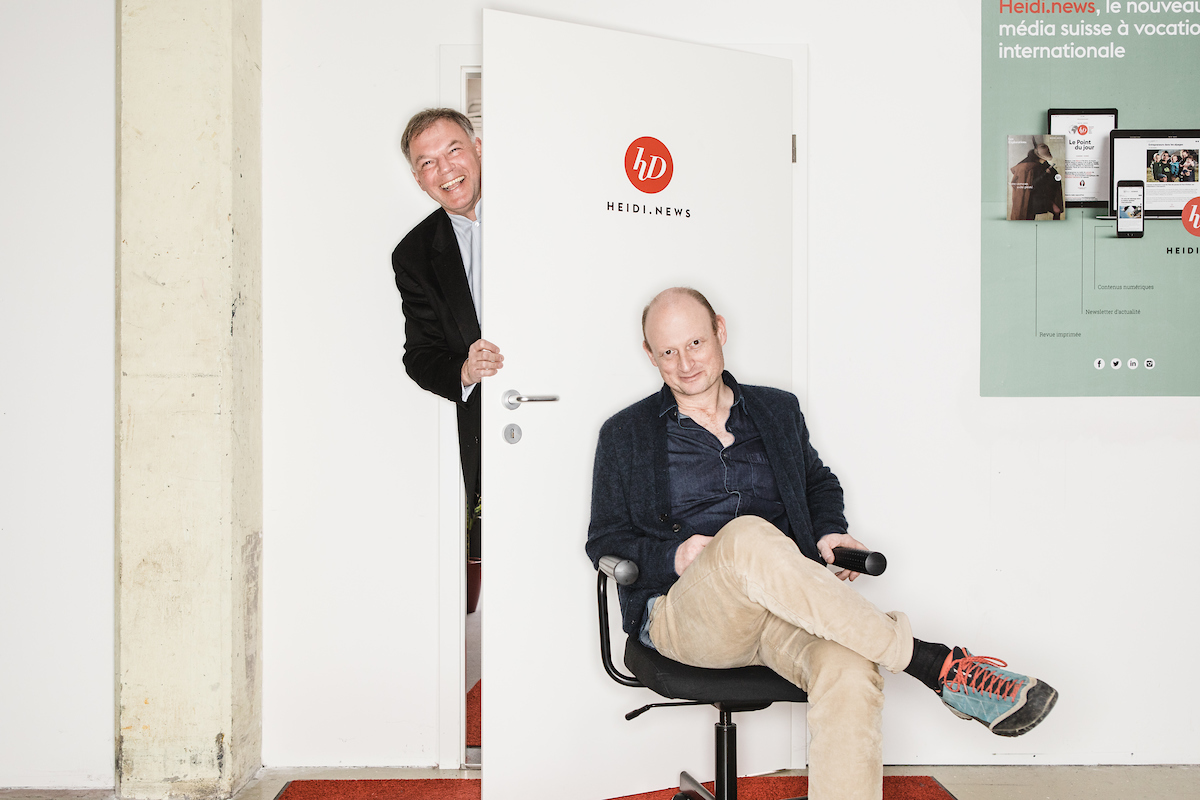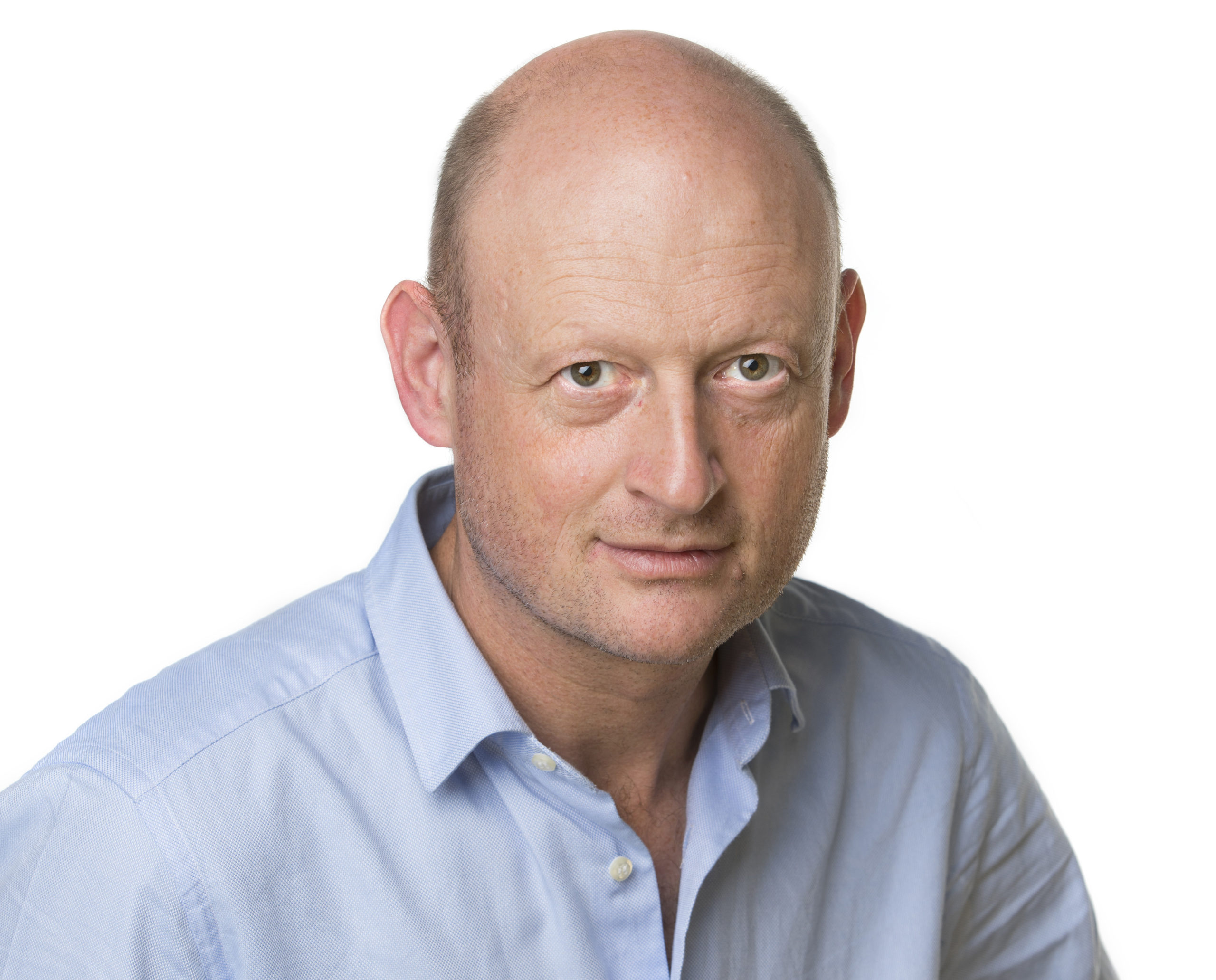This case study is part of Resilience Reports, a series from the European Journalism Centre about how news organizations across Europe are adjusting their daily operations and business strategies as a result of the COVID-19 crisis.
In a nutshell: Heidi.news doubled its number of members and got 10 times as many visitors to its site at the early stages of COVID-19 in Switzerland
With a population of 1.5 million, the French-speaking part of Geneva — where Swiss news startup Heidi.news is based — is home to 100,000 people in the health sector and another 100,000 in science. This demographic meant that, when it was founded in May 2019, Heidi.news chose to specialize in health and science reporting. Without knowing it, this ensured it was well-equipped to cover the COVID-19 pandemic.
Heidi.news founder Serge Michel called the pandemic “a crash test” for the team and its reporting. But strong visitor numbers and a surge in members signing up to support the site shows positive signs.
Here, Tara Kelly from the European Journalism Centre explains more about Heidi.news and what it did to report on the coronavirus crisis.
What is Heidi.news?
Heidi.news is an online media news outlet that was launched in Geneva in May 2019. It offers constructive journalism focused on science and health, as well as major stories in Switzerland and from around the world. While most of its content is published in French — mainly to serve the 1.5 million Swiss Francophone population — it also publishes certain content in English to cater to the professional science and health communities based in Geneva.
The team is currently made up of 19 people. It employs 12 journalists, three interns and four people working in IT, marketing and administration. Heidi.news also relies on a network of 15 stringers and freelancers.
Its content falls into three regular formats:
- Two daily newsletters – Le Point du jour (Daily point or at the crack of dawn) is a free daily newsletter sent out Monday to Saturday at 6 a.m. It provides a summary of the news and is sent by one of its correspondents from a different city in the world. Sortir de la crise (Getting out of the crisis) is sent out every day.
- Les flux (The flow) – Five to 15 pieces of content per day covering science, health, innovation and climate. Les flux also includes Geneva Solutions, an English section, which is a solutions journalism project. It focuses on the United Nations and humanitarian community and is published in English. Les flux is published on weekdays.
- Explorations – A deep dive into a specific topic published in six to 12 episodes. These long read articles allow people to slowly discover a topic and are published on weekends. Topics include digital addiction and the Swiss people who wait for the end of the world. Some of them are turned into a quarterly print edition called La revue des explorations (The review of the explorations). These allow readers to slowly discover a topic and are sold online and in bookstores.
Heidi.news has a membership program with the option to pay monthly or yearly. It has two different tiers: digital-only membership (180 Swiss franc a year) or a digital plus membership (280 Swiss franc a year) where they gain access to all articles and the quarterly book. About 90% of members are annual and people can cancel any time. Heidi.news intentionally decided to make it very easy to cancel.
At the time of writing, Heidi.news has 5,000 paying members. However, its goal is to reach 15,000 by 2023 in order to break even. Members also attend events and answer reader surveys to help the Heidi.news team understand how best to serve them.
Based on these surveys, the team knows members are mostly educated people aged 35 to 60. A large number are also students, as they offer a free membership until age 26. Geographically, its members are mostly in Switzerland (70%), followed by France (20%) with the rest in the United States and Asia. Casual readers are more fractured: 45% are based in France, 35% in Switzerland, 10% in the United States and the rest split between Belgium, Algeria, Canada, Germany and the United Kingdom.

Heidl.news co-founders Serge Michel (seated) and Tibere Adler
(Courtesy: Nils Ackermann)
Heidi.news was founded by two people, Serge Michel and Tibere Adler. Serge formerly served as deputy editor-in-chief of Le Temps and deputy director of Le Monde. He was then editor-in-chief of Le Monde Afrique, the African version of the website lemonde.fr. Tiber Adler is a lawyer, entrepreneur and corporate director. He was CEO of the Edipresse group and director of the French-speaking Swiss think tank Avenir Suisse.
Together they noticed that the local media in the French-speaking part of Switzerland were unable to meet the needs of the local highly qualified community as well as the international community, with professionals from the UN, the World Health Organization and CERN, as well as finance and academia. This led them to create Heidi.news in spring 2019.
How did Heidi.news handle the COVID-19 crisis?
During the lockdown, the team doubled its production of articles to approximately 250 a month. Along with more typical stories, the team began fact-checking conspiracy theories related to COVID-19 and increased its number of data-driven articles. It developed a new article format, an “all you need to know about …” type of article for topics that were new to the public and needed more explanation. Some articles that were deemed in the public interest were made free for non-members to access.
Heidi.news does not allow reader comments, but it has a Questions section which allows readers to ask questions to the newsroom. At the height of the pandemic, it received dozens of questions. These became the starting point for written articles. They ranged from general questions to more precise scientific ones, like “Does the mosquito have it in him to destroy the coronavirus?” or “Can an employer stop an employee from traveling to at-risk countries?” Some non-COVID questions continued to be asked during this period, including “Should you keep your eggs in the fridge?” The team dedicated a lot of time to this and answered four to five questions per day. Even now, the team continues to receive questions from its audience and to publish articles that answer them.
Prior to the pandemic, one of its newsletters, Le Point Sciences, was sent every day from a different Swiss university campus; it covered university news as well as the latest science, research and innovation. However, when COVID-19 arrived in Switzerland, the team decided to change the newsletter overnight and call it “Le Point Coronavirus.” It launched on March 17 and was sent from a different Swiss hospital every day.
In June, as the COVID-19 cases began to decline, it changed this newsletter again to “Sortir de la crise” which means “get out of the crisis.” Sent every weekday at 6 p.m., the “Sortir de la crise” newsletter addresses the issues of ending the health crisis according to a different theme: economy, science, health, education and culture.
Since the pandemic, this newsletter grew from 3,000 to 10,000 subscribers, with an average open rate of 50%.
Heidi.news’ explorations section made a special effort to cover COVID-19 during this period but made sure to cover other issues, too. Overall, 26 different explorations have been published since April 2019, with six of them covering in-depth pandemic-related topics.
Its coronavirus coverage looked at the face mask market in Geneva and followed the path of Zalfa El-Harake, a woman who wants to open a mask factory in Geneva and slash market prices.
Another story examines Milan in the time of Coronavirus through 40 episodes. Many of the Milan episodes made it in the top 10 weekly most-read stories on Heidi.news.
Another memorable long read is from a journalist who spent 72 hours on the coronavirus frontlines inside a university hospital in Lausanne. Many doctors subscribed after this story was published and Heidi.news received 10 testimonies from patients’ families about treatment of the virus in hospitals.
This combination of deep reporting and audience-led commissioning has led to a significant uptick in traffic since the start of the year. So far in 2020, Heidi.news’ site received an average of 920,000 unique visitors per month. It experienced peaks in unique visitors in March and April 2020 —- three times that figure. On average, the number of monthly visitors in 2020 has been 10 times that of 2019, when it first launched.
Since the pandemic, Heidi.news has more than doubled its subscribers from 2,500 in February to almost 6,000 by September. The main referral for subscriptions are its newsletters followed by Google and then Facebook. At present, it is preparing a LinkedIn campaign to generate more subscribers. For the first time ever, Heidi.news used advertising in the streets of Geneva and other French-speaking Swiss cities to promote its brand. It’s too early to say how successful this has been.
Every week, Heidi.news publishes one or two pieces that its editors think are worth using as free articles to attract a bigger audience. These free articles contain a message that explains that they have been made available for all for the sake of public interest. These stories often bring subscribers.
How has COVID-19 changed the future of Heidi.news?
The pandemic has helped shape Heidi.news’ strategy by helping it figure out what new media topics it should cover. In addition to health, science and education, they will introduce two new themes — business and culture — because they are the two other areas significantly impacted by COVID-19. New journalists will be hired to cover these beats.
The team demonstrated its ability to efficiently work from home with Slack and video conferencing tools. This means that staff will not be expected to come to the office as often in the future. For example, its four Paris staffers will come to the Geneva newsroom on a monthly basis, rather than weekly as before the pandemic. This is expected to improve the well-being of the team without impacting its productivity.
The company plans to reach its goal of 15,000 paying members by 2023. At that point, 70% of its revenue will come from members. It plans to grow by expanding into new content areas like business and culture, in addition to its current beats of health, science and education. For the moment, it must cover gaps in its annual budget by finding investors and donors.
What have they learned?

Heidl.news co-founder Serge Michel (Courtesy: Nicolas Lieber)
“We learned to remain super flexible, stay focused on delivering our added value to readers. We discovered how important it is to answer the needs of our audience. It’s also essential to allow staff to rest after their incredible effort during the crisis.”
– Serge Michel, editorial director, Heidi.news
This case study was produced with support from Evens Foundation. It was originally published by the European Journalism Centre on Medium and is published here under the Creative Commons Attribution-NonCommercial-ShareAlike 2.0 license. The Poynter Institute is also the fiscal sponsor of the Verification Handbook.






